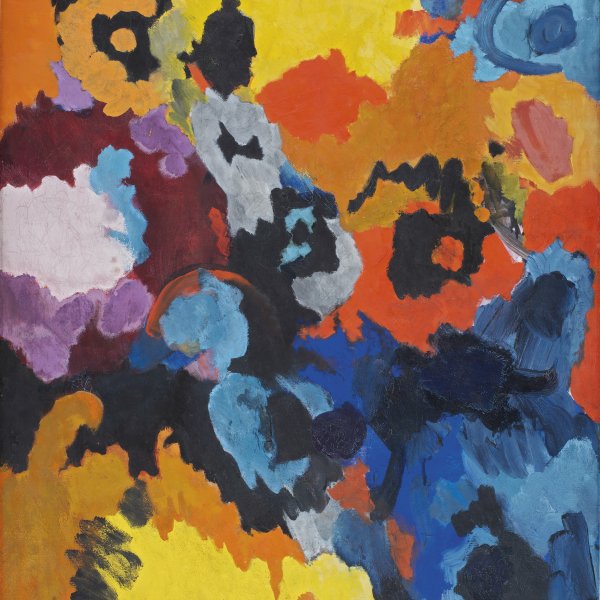Ernst Wilhelm Nay
Berlín, 1902-Colonia, 1968
The son of a government counsellor of the German Kaiserreich, Ernst Wilhelm Nay received a humanistic education. In 1921, after obtaining the Abitur (high school diploma), he began to paint. In 1925 he enrolled in the painting class of Karl Hofer, a teacher at the Berliner Akademie. Nay studied intensively Picasso, Kirchner, Matisse and Poussin. When he left the Akademie in 1928, he had already exhibited at the Galerie Nierendorf in Berlin and had the support of critics like Paul Westheim. He painted still lifes, portraits and landscapes. In 1929 he joined the Association of Berlin Artists, thus making new contacts and increasing his chances of holding exhibitions. The following year, the Nationalgalerie bought one of his beach scenes. In 1931 Nay was granted a nine-month scholarship for Villa Massimo in Rome, where he developed his own style, initially marked by abstract surrealist compositions and paintings of ornamental mythical animals. His trips to the Baltic Sea and his sojourns in Norway, where he met Munch, and his visits to the Lofoten island, defined the subjects of his artistic world. In 1937 he was affected by the exhibition ban imposed by the national-socialists. Two of his landscapes were shown in the exhibition Entartete Kunst (Degenerate Art). He was enlisted in 1940, and spent most of his time as a cartographer in France, where the amateur sculptor Pierre Térouanne put his studio at Nay's disposal, so that he could carry on working. Ernst Jünger visited him and bought his painting Elk's Head. After 1945, Nay worked on various sets of works, ranging from the mythic-abstract Paintings of Hecate, to the abstract Scheibenbilder, to the ornamental reductionism of his later work. Nay took advantage of the international vogue for abstract painting as the world's aesthetic language. In 1950 his first retrospective exhibition was held in Hanover. The acknowledgement of this artist in and outside Germany is confirmed by his participation in three editions of the Documenta of Kassel. In 1948 Nay took part in the Venice Biennale and in 1956 he represented there the German Federal Republic. After the controversy triggered by his contribution to the 1964 Documenta, the so called Eye Paintings, his artistic career ended. Nay died four years later at the age of 65.
Astrit Schmidt-Burkhardt
Astrit Schmidt-Burkhardt





